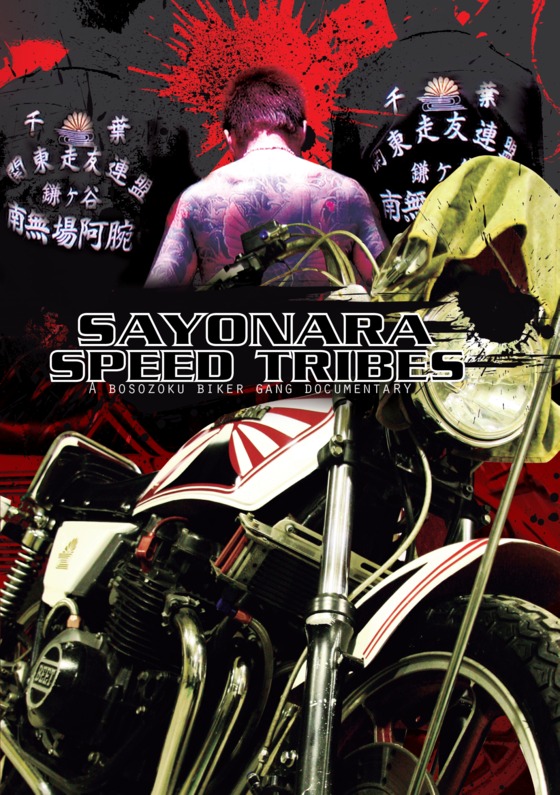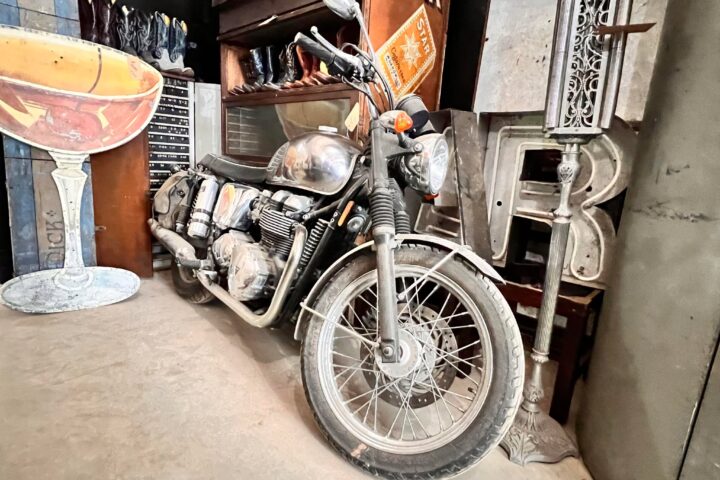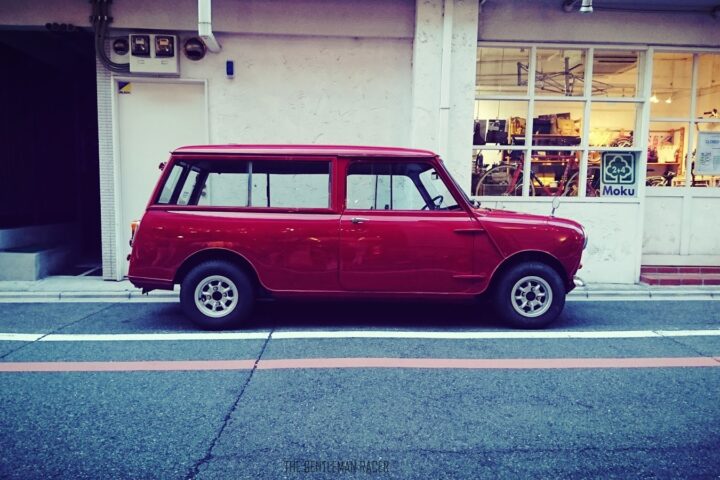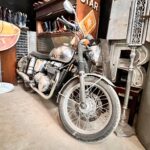by Michael Satterfield
An intimate portrait of Japanese outsiders living on the edge. “Sayonara Speed Tribes” check out the trailer below.
Buy the film here: www.figure8productions.com (We ordered ours already and can’t wait to see it)
As Japan reaped the benefits of post-WWII reconstruction, it began experiencing growing pains. Once famous for its spartan disciplined austerity, Japan now experienced a surge in violent student protests and rising juvenile delinquency. A yearning for revolt among Japan’s youth became a chaotic, yet palpable force. Nightly gatherings of youngsters on motorbikes drawing large crowds of spectators dominated the attention of police and media outlets after the outbreak of several riots that shook the nation. The media and authorities fashioned a new model for delinquency, packaged it for the masses and penned its name in the papers: “Bosozoku”.
Bou 暴 means VIOLENT, Sou 走 SPEED and Zoku 族 TRIBE– SPEED TRIBES. As the frenzy of police and media campaigns against the bikers saturated Japan’s news, the Bosozoku began flashing their outlaw image as a badge of honor. Far from destroying the Bosozoku, intense media coverage became a theatrical spotlight for gangsters who craved fame at all costs.
Bosozoku wear tokkofuku (battle uniforms)—nationalistic, kamikaze-themed uniforms designed with gang icons and embroidered with “poetry” in Japanese “kanji” characters. They ride customized, illegally modified bikes with chopped-off mufflers and ignore all traffic laws while evading police cruisers with the deft precision of fighter pilots. For decades they have ruled the streets at midnight, but times are changing fast and now, due to police pressure and shifting cultural trends, Bosozoku numbers are fading fast. For the general public, who typically view them as a nuisance, the decline of the Bosozoku is long overdue, but for Bosozoku enthusiasts, their decline is a bitter farewell to a proud tradition. For many, being a Bosozoku is a one-way journey into the underworld.
“Sayonara Speed Tribes” focuses on Hazuki, former leader of the infamous Narushino Specter gang. According to Hazuki, “Once you go Bosozoku, you’ve turned your back on Japanese society and given up on the idea of a ‘normal’ life.” Much to his dismay, Bosozoku is becoming mostly about fashion and joyriding, a stark contrast to Bosozoku discipline and devotion to the team or gang of his glory days as leader of Specter. Specter once ruled much of Tokyo, but now is isolated to Hazuki’s home town. Meetings in tokkofuku jackets and late-night kamikaze-style bike runs are becoming things of the past.
Hazuki’s only success in life seems to be his fame in the Bosozoku world as star of ‘Teens Road,’ a series of Bosozoku videos filmed early in the 1990s. Where can he carve a place out for himself in Japanese society?
Whether or not Bosozoku are a legitimate part of ‘Japanese’ culture is up for debate. “They may not be attractive in the ‘Japanese sense’ but in their minds, they [Bosozoku] are like Samurai with a warrior spirit,” says Yoshinaga, a documentary photographer who works with Hazuki on magazine shoots documenting some of the few remaining Bosozoku.
The last stand for the bikers, as the Japanese become ever more weary of their antics, takes place in an unlikely location. On the tiny island of Okinawa, often called “Japan’s Hawaii,” defiant bikers still wear tokkofuku uniforms, arm themselves with baseball bats and taunt police officers; a welcome spectacle for bored kids who loiter along highways in the hopes of catching some action. This is a taste of the Bosozoku scene circa the 1970s. As sociologist Uchikoshi Masayuki puts it, “When they joyride at the main intersections and fight the police they are the heroes and the police are supporting actors.”
The film includes commentary on the Bosozoku from the NPA (National Police Agency), author Sato Ikuya (“Kamikaze Biker”) and the general public.
“SAYONARA SPEED TRIBES” offers a fascinating narrative and documents the decline of one of Japan’s most colorful and controversial sub-cultures. The film blends verité footage and interviews, manga-style animation, still, photography and riveting footage from bike runs.
The film is sure to be a cult hit among bike enthusiasts and those looking for a ride on the wild side of Japan. 暴走族 一斉封鎖 検問 bousouzoku 大阪






















